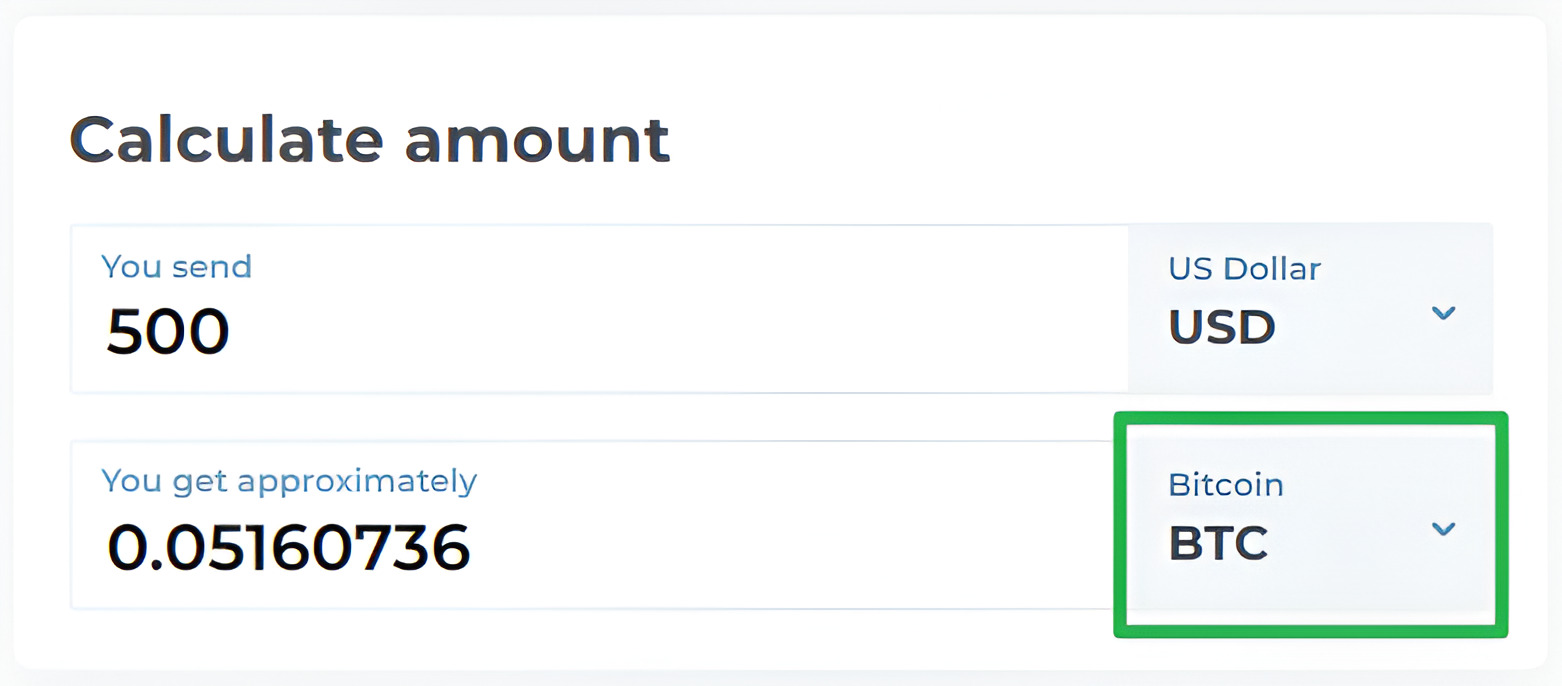The Basics of Bitcoin
Bitcoin, a decentralized digital currency, has gained significant popularity and attention in recent years. It offers several advantages over traditional forms of currency, such as increased security, reduced transaction fees, and greater privacy. Understanding the basics of Bitcoin is crucial for anyone looking to venture into the world of cryptocurrency.
Bitcoin functions on a technology called blockchain, which is essentially a public ledger that records all transactions made using the currency. This decentralized nature means that no single entity or government has control over Bitcoin, making it immune to censorship and manipulation.
To comprehend how Bitcoin operates, it’s important to grasp the concept of mining. Bitcoin miners utilize powerful computers to solve complex mathematical puzzles in order to validate and confirm transactions. In return for their efforts, miners are rewarded with newly created Bitcoins.
In order to store and manage Bitcoin, users need a digital wallet. These wallets come in various forms, including online wallets, hardware wallets, and mobile apps. They enable users to send, receive, and store their Bitcoins securely.
The value of Bitcoin is known for its volatility. Its price can fluctuate greatly from day to day, driven by factors such as market demand, investor speculation, and global economic events.
Investing in Bitcoin can be a lucrative opportunity, but it also comes with risks. It’s essential to approach it with caution and conduct thorough research before making any investment decisions. Some tips for investing in Bitcoin include staying updated with the latest news and market trends, diversifying your portfolio, and only investing what you can afford to lose.
The future of Bitcoin remains uncertain, with divided opinions among experts and investors. Some believe it has the potential to revolutionize the financial industry and become a mainstream form of currency, while others are skeptical about its long-term viability.
As with any investment, it’s important to carefully consider your own financial goals, risk tolerance, and investment strategy when deciding whether or not to invest in Bitcoin. While it can offer exciting opportunities, it also comes with inherent risks, and thorough research and understanding of the cryptocurrency market are essential.
What Is Bitcoin?
Bitcoin is a digital currency that was introduced in 2008 by an unknown person or group of people using the name Satoshi Nakamoto. It operates on a decentralized network, known as blockchain, which enables peer-to-peer transactions without the need for intermediaries such as banks or governments.
Unlike traditional fiat currencies, such as the US dollar or the Euro, Bitcoin is not issued or regulated by any central authority. Instead, it is created through a process called mining, where powerful computers solve complex mathematical problems to validate transactions and secure the network.
The supply of Bitcoin is limited, with a total of 21 million Bitcoins that can ever be created. This scarcity, combined with the increasing demand for Bitcoin, has contributed to its value and volatility in the market.
One of the key features of Bitcoin is its pseudonymous nature. While transactions are recorded on the blockchain, the actual identities of the parties involved are not directly tied to the transactions. Instead, Bitcoin addresses, consisting of a series of numbers and letters, are used to send and receive funds.
Bitcoin transactions offer several advantages over traditional financial systems. They are generally faster and cheaper, especially for international transfers. Furthermore, Bitcoin transactions are irreversible, reducing the risk of chargebacks and fraud.
Bitcoin’s impact goes beyond being a digital currency. It has paved the way for the development of other cryptocurrencies, collectively known as altcoins, and has inspired the creation of innovative blockchain-based applications and technologies.
However, Bitcoin is not without its challenges. Its scalability has been a point of contention, as the network can face congestion during times of high transaction volume. Additionally, the volatility of Bitcoin prices has made it subject to speculation and a target for market manipulation.
Despite these challenges, Bitcoin has gained significant acceptance and adoption worldwide. Today, you can use Bitcoin to make purchases at select online and physical stores, donate to charities, and even invest in other financial products tied to Bitcoin’s performance.
In summary, Bitcoin is a decentralized digital currency that operates on a peer-to-peer network. Its limited supply, pseudonymous nature, and potential for global financial disruption have made it a compelling alternative to traditional forms of currency.
How Bitcoin Works
Bitcoin operates on a complex system that combines cryptography, peer-to-peer networking, and decentralized consensus. Understanding how Bitcoin works is essential for grasping its revolutionary nature in the financial world.
At the core of the Bitcoin system is the blockchain. The blockchain is a public ledger that records all Bitcoin transactions. It ensures transparency and immutability by creating a permanent record of every transaction ever made.
When a person initiates a Bitcoin transaction, the information is broadcasted to a network of computers, also known as nodes. These nodes work together to validate the transaction by confirming that the sender has sufficient funds and that the transaction is not double-spending.
Once the transaction has been validated, it is added to a block, along with other recently validated transactions. This block is then added to the existing blockchain, creating a chain of blocks that contains the entire history of Bitcoin transactions.
To ensure the security and integrity of the blockchain, Bitcoin uses a cryptographic technique called hashing. Each block contains a unique cryptographic hash, which is generated by a mathematical algorithm. This hash serves as a fingerprint for the block, making it nearly impossible to alter any transaction data without being detected.
Furthermore, Bitcoin employs a consensus mechanism known as proof-of-work. Miners, who are participants in the network, compete to solve a complex mathematical puzzle by using computational power. The first miner to solve the puzzle successfully adds the next block to the blockchain and receives a reward in the form of newly created Bitcoins.
As more miners join the network, the puzzles become increasingly difficult, ensuring that new blocks are added to the blockchain at a consistent rate. The mining process also helps to secure the network and prevent any single entity from gaining control over the system.
Bitcoin transactions offer a degree of privacy by using pseudonymous addresses instead of real-world identities. However, it is important to note that all transactions are still publicly recorded on the blockchain, meaning that the transaction history can be traced.
In summary, Bitcoin operates on a decentralized network where transactions are validated by nodes and added to a public ledger called the blockchain. The network’s security is ensured through cryptographic hashing and proof-of-work consensus. This innovative system allows for secure and transparent peer-to-peer transactions, eliminating the need for intermediaries and revolutionizing the way we exchange value.
How Bitcoin Is Created
Bitcoin is created through a process known as mining. Mining involves using powerful computers to solve complex mathematical problems in order to validate and add new transactions to the blockchain, the public ledger that records all Bitcoin transactions.
When a Bitcoin transaction is initiated, it is broadcasted to the network of computers, or nodes, that make up the Bitcoin network. These nodes collect and verify the transaction data, ensuring that the sender has sufficient funds and that the transaction is not a double spend.
Once the transaction is verified, it is bundled together along with other recently verified transactions into a block. Each block contains a unique cryptographic hash that serves as a digital signature, ensuring the integrity of the block and making it nearly impossible to alter its contents.
Mining involves solving a mathematical puzzle that requires significant computational power. Miners compete to be the first to find a solution to the puzzle, with the winner being rewarded with newly created Bitcoins.
The mining puzzle is designed to be difficult, and the computational power required to solve it increases as more miners join the network. This ensures that new blocks are added to the blockchain at a consistent rate, approximately every 10 minutes.
Once a miner successfully solves the puzzle and adds a new block to the blockchain, they are rewarded with a predetermined amount of Bitcoins. This reward serves as an incentive for miners to continue participating in the network and securing the blockchain.
The amount of the mining reward decreases over time. When Bitcoin was first created in 2009, the mining reward was 50 Bitcoins per block. However, this reward is halved approximately every four years in an event known as the Bitcoin halving. The most recent halving occurred in May 2020, reducing the mining reward to 6.25 Bitcoins per block.
As the supply of Bitcoins is limited to 21 million coins, mining will eventually reach a point where no new Bitcoins are created. At this stage, miners will rely solely on transaction fees for their compensation.
It’s important to note that mining requires a significant amount of energy consumption due to the computational power needed to solve the mathematical puzzles. As a result, there are ongoing efforts to develop more energy-efficient mining techniques and explore alternative consensus mechanisms.
In summary, Bitcoin is created through a process called mining, where powerful computers solve complex mathematical problems to validate and add new transactions to the blockchain. Miners are rewarded with newly created Bitcoins for their efforts, and the mining reward decreases over time as the Bitcoin supply approaches its maximum limit.
The Concept of Bitcoin Mining
Bitcoin mining is a crucial component of the Bitcoin network and plays a vital role in securing the blockchain and validating transactions. Mining involves solving complex mathematical puzzles using powerful computers in order to add new blocks to the blockchain.
At its core, Bitcoin mining is a process of verifying and validating transactions. When a Bitcoin transaction is initiated, it gets broadcasted to a network of computers, also known as nodes. Miners collect and verify these transactions, ensuring their validity and avoiding double-spending.
To add a new block to the blockchain, miners must compete to solve a mathematical puzzle. This puzzle, known as proof-of-work, requires extensive computational power and is designed to be difficult to solve, thereby ensuring the security of the network.
Miners race against each other to be the first to find the solution to the puzzle. The competition is fierce, with miners constantly upgrading their hardware and joining mining pools to increase their chances of success. The miner who solves the puzzle first gets the honor of adding the next block to the blockchain and is rewarded with newly minted Bitcoins.
The process of mining not only validates transactions but also helps to secure the network. As miners add new blocks to the blockchain, they create a chain of blocks that contains the entire history of Bitcoin transactions. This decentralized ledger ensures transparency, immutability, and resistance to censorship or tampering.
The difficulty of the mining puzzle adjusts approximately every two weeks to maintain a consistent block creation time of around 10 minutes. As more miners join the network, the puzzle becomes harder to solve, requiring more computational power. Conversely, if miners leave the network, the puzzle becomes easier to maintain the desired block creation time.
Bitcoin mining requires substantial energy consumption due to the computational power needed to solve the mathematical puzzles. As a result, mining has faced criticism for its environmental impact. However, it’s worth noting that Bitcoin mining incentivizes the development of renewable energy sources and increasingly efficient mining hardware.
As the Bitcoin network matures and approaches its maximum supply limit of 21 million Bitcoins, the mining reward decreases through a process called halving, which occurs approximately every four years. This event reduces the number of new Bitcoins created per block, making mining less profitable. Miners will increasingly rely on transaction fees to sustain their operations and secure the network.
In summary, Bitcoin mining is a fundamental process in the Bitcoin network. It involves validating and verifying transactions by solving complex mathematical puzzles. Mining secures the blockchain, rewards miners with newly minted Bitcoins, and ensures the transparency and immutability of the decentralized ledger.
What Is a Bitcoin Wallet?
A Bitcoin wallet is a digital tool that allows users to store, send and receive Bitcoins securely. While Bitcoin itself is a digital currency, it does not physically exist in the form of coins or notes. Instead, Bitcoin balances are recorded on the blockchain, a public ledger that keeps track of all transactions.
A Bitcoin wallet consists of two main components: a public key and a private key. The public key serves as your Bitcoin address, which is comparable to a bank account number. It is the address that you share with others when you want to receive Bitcoins.
The private key, on the other hand, is a secret code that gives you access to your Bitcoin balance. It is crucial to keep your private key safe and secure, as anyone who has access to it can control and spend your Bitcoins.
Bitcoin wallets come in various forms, each offering different levels of security and convenience. The four main types of wallets are:
- Software Wallets: These wallets are software applications that you install on your computer or smartphone. They give you control over your private keys and allow you to manage your Bitcoin transactions independently. Examples of software wallets include Electrum, Exodus, and Mycelium.
- Hardware Wallets: Hardware wallets are physical devices that store your private keys offline. They offer a high level of security by keeping your private keys away from potential online threats. Hardware wallets, like Ledger and Trezor, often require you to physically confirm transactions, providing an additional layer of protection.
- Online Wallets: Also known as web wallets, online wallets store your private keys on a server controlled by a third party. They are convenient as you can access them from any device with an internet connection, but they come with a greater risk of being hacked or controlled by an external entity. Examples of online wallets include Coinbase, Blockchain.com, and BitPay.
- Paper Wallets: Paper wallets are a physical printout that contains your Bitcoin public and private keys. They are considered the most secure form of storage as they are not vulnerable to online attacks. However, they can be easily lost or damaged, so proper care must be taken when generating and storing them.
It’s important to note that a Bitcoin wallet does not actually store your Bitcoins but rather contains the keys needed to access and control them on the blockchain. Your Bitcoins always reside on the blockchain, regardless of the type of wallet you use.
When receiving Bitcoins, you provide your Bitcoin address to the sender, who then transfers the funds to that address. Conversely, when sending Bitcoins, you input the recipient’s Bitcoin address and digitally sign the transaction using your private key.
It’s crucial to choose a reliable and secure Bitcoin wallet that aligns with your needs and preferences. Factors to consider when selecting a wallet include security, ease of use, compatibility with your devices, and backup options.
In summary, a Bitcoin wallet is a digital tool that allows users to store, send, and receive Bitcoins securely. It consists of a public key (Bitcoin address) and a private key, which grants access to the Bitcoin balance recorded on the blockchain. Bitcoin wallets come in different forms, including software wallets, hardware wallets, online wallets, and paper wallets, each offering varying levels of security and convenience.
The Current Value of Bitcoin
Bitcoin’s value has been a topic of great interest and speculation since its inception. The price of Bitcoin is determined by the forces of supply and demand in the market, and it can experience significant volatility over short periods of time.
As of today, the value of 1 Bitcoin is constantly changing due to the dynamic nature of the cryptocurrency market. It is important to note that Bitcoin is divisible, and you can own fractions of a Bitcoin, so you don’t need to buy a whole Bitcoin to participate in its value.
Bitcoin’s value is primarily determined by factors such as:
- Market Demand: The demand for Bitcoin plays a significant role in influencing its price. Increased demand from investors and traders can drive up the price, while decreased demand can result in a drop in value.
- Market Sentiment and Investor Confidence: The overall sentiment and confidence of investors in the cryptocurrency market can impact Bitcoin’s value. Positive news or developments in the Bitcoin ecosystem can lead to increased investor confidence, driving the price up.
- Regulatory Developments: Regulatory actions and policies by governments and financial institutions can impact the value of Bitcoin. Positive regulations or favorable legal frameworks can boost confidence in Bitcoin and attract more investors, while restrictive regulations or bans can have a negative effect.
- Global Economic Factors: Economic events and macroeconomic trends, such as inflation rates, geopolitical issues, and financial crises, can indirectly affect the value of Bitcoin. Bitcoin is often perceived as a hedge against inflation or a safe-haven asset, leading to increased demand during times of economic uncertainty.
- Technological Advancements and Innovations: Developments in the underlying technology of Bitcoin and the broader cryptocurrency ecosystem can also influence its value. Improvements in scalability, security, and utility can lead to increased adoption and, in turn, impact the price.
It’s important to note that Bitcoin’s value can be highly volatile, and its price movements can be rapid and unpredictable. Large price swings, both upwards and downwards, are not uncommon within the cryptocurrency market.
Various platforms and exchanges provide real-time information on the current value of Bitcoin. These platforms enable users to check the latest price, historical price charts, trading volumes, and market depth to make informed trading decisions.
It’s worth mentioning that there are also other cryptocurrencies in the market, often referred to as altcoins, whose values may be influenced by similar factors. The relationships between Bitcoin and other cryptocurrencies, including their correlations and market dynamics, can also impact Bitcoin’s value.
Keeping up with the latest news, market trends, and research can help individuals understand the current factors influencing Bitcoin’s value. However, it’s important to approach investing in Bitcoin or any other cryptocurrency with caution, due diligence, and a balanced perspective on the potential risks and rewards involved.
In summary, the value of Bitcoin is determined by market demand, investor sentiment, regulatory developments, global economic factors, and technological advancements. The price of Bitcoin is highly volatile and can experience significant fluctuations. Staying informed about the current market dynamics can help individuals understand the factors influencing the value of Bitcoin.
Understanding Bitcoin Prices
The price of Bitcoin is subject to constant fluctuations, and understanding the factors that influence Bitcoin prices can provide valuable insights for investors and anyone interested in the cryptocurrency market.
One important aspect to consider is the concept of supply and demand. The total supply of Bitcoin is limited to 21 million coins, and as the demand for Bitcoin increases, its price tends to rise. Conversely, if the demand decreases, the price may drop.
External factors such as economic and geopolitical events can also impact Bitcoin prices. For example, during times of economic instability or uncertainty, individuals may view Bitcoin as a safe-haven asset, leading to increased demand and a subsequent price increase.
Government regulations and policies can have a significant influence on Bitcoin prices. Positive regulations and increased acceptance by governments and financial institutions can bolster confidence in Bitcoin and attract more investors, potentially driving prices higher. On the other hand, restrictive regulations or bans can dampen investor sentiment and negatively impact prices.
Market sentiment and investor psychology also play a role in Bitcoin prices. Positive news about Bitcoin’s potential applications or adoption by major companies can create optimism and drive up prices. Conversely, negative news, such as security breaches or hacking incidents, can cause panic selling and lead to price declines.
Bitcoin’s price can also be influenced by technological developments. Improvements in scalability, security, and utility can enhance the overall value proposition of Bitcoin, attracting more users and investors and potentially driving prices higher.
Moreover, the overall market dynamics and the relationship between Bitcoin and other cryptocurrencies can impact prices. As Bitcoin is considered the dominant cryptocurrency, the performance of other cryptocurrencies, often referred to as altcoins, may affect investor sentiment and indirectly influence Bitcoin prices.
Investor speculation and trading activities can contribute to price volatility. Short-term price movements can be influenced by market manipulation and trading strategies, such as day trading or margin trading, which can result in rapid price fluctuations. It is important to note that these short-term fluctuations may not necessarily reflect the long-term value or potential of Bitcoin.
Bitcoin’s liquidity also affects its prices. Liquidity refers to the ease with which an asset can be bought or sold without causing significant price fluctuations. High liquidity is generally associated with larger trading volumes, which can help stabilize prices and reduce the impact of individual buy or sell orders on the overall market.
It is important to approach Bitcoin prices with a long-term perspective, as short-term fluctuations are common. Understanding the various factors that can influence prices can help individuals make informed decisions and navigate the volatile cryptocurrency market.
In summary, Bitcoin prices are influenced by factors such as supply and demand, economic and geopolitical events, government regulations, market sentiment, technological developments, market dynamics, investor speculation, and liquidity. It’s important to consider these factors and approach Bitcoin prices with a long-term perspective when making investment decisions.
Factors Influencing Bitcoin Prices
The price of Bitcoin is influenced by a variety of factors, both internal and external, that impact the supply and demand dynamics of the cryptocurrency market. Understanding these factors can provide insights into the drivers behind Bitcoin’s price movements.
Supply and Demand: The limited supply of Bitcoin, with a maximum of 21 million coins, creates scarcity and can drive up prices when demand exceeds supply. Conversely, a decrease in demand can lead to price declines.
Market Sentiment: Investor sentiment and perception of Bitcoin’s future prospects can significantly impact prices. Positive news, such as the adoption of Bitcoin by major companies or regulatory approvals, can boost sentiment and drive prices higher. Conversely, negative news or events can result in a decline in sentiment and a subsequent decrease in prices.
Regulatory Environment: Government regulations and policies play a crucial role in shaping the cryptocurrency market and can impact Bitcoin prices. Favorable regulations, such as legal recognition and clear guidelines, can instill confidence in investors and lead to increased adoption, potentially driving prices up. On the other hand, restrictive regulations or bans can dampen investor sentiment and adversely affect prices.
Macroeconomic Factors: Global economic trends and events, such as inflation rates, interest rates, and geopolitical instability, can indirectly impact Bitcoin prices. Economic uncertainty may drive investors to seek alternative assets like Bitcoin, leading to increased demand and upward price pressure.
Technological Innovation: Advances in Bitcoin’s underlying technology, as well as developments in the broader blockchain ecosystem, can impact prices. Improvements in scalability, security, and utility can enhance Bitcoin’s value proposition, attract more users and investors, and potentially drive prices higher.
Market Manipulation: The relatively small size and liquidity of the cryptocurrency market can make it susceptible to market manipulation. Large-scale traders or “whales” can exert considerable influence on prices through activities such as wash trading or spoofing, creating artificial buying or selling pressure that can result in price fluctuations.
Media Coverage: Media coverage plays a significant role in shaping public perception and awareness of Bitcoin. Positive media coverage, such as mainstream adoption or positive endorsements from influential figures, can drive up demand and contribute to price increases.
Investor Speculation and Trading: Speculative trading activities, such as day trading or margin trading, can lead to short-term price volatility. Significant price movements driven by investor speculation may not necessarily reflect the long-term fundamentals of Bitcoin.
Integration with Traditional Financial Systems: Increased acceptance and integration of Bitcoin into traditional financial systems, such as the availability of Bitcoin-based financial products or the launch of Bitcoin-focused exchange-traded funds (ETFs), can contribute to increased institutional investment and price appreciation.
Network Health and Security: Bitcoin’s network health and security, including the resilience of the network to potential attacks or vulnerabilities, can impact investor confidence. Major security breaches or incidents may result in temporary price drops as investors react to the perceived risk.
It is important to recognize that Bitcoin’s price is influenced by a combination of these factors and may experience rapid fluctuations in the short term. Understanding the complex interplay between these factors can help individuals form a more comprehensive view of Bitcoin’s price dynamics.
In summary, Bitcoin’s price is influenced by factors such as supply and demand dynamics, market sentiment, regulatory environment, macroeconomic factors, technological innovation, market manipulation, media coverage, investor speculation, integration with traditional financial systems, and network health and security. These factors collectively shape the price of Bitcoin and contribute to its volatility in the cryptocurrency market.
How Is the Price of Bitcoin Determined?
The price of Bitcoin is determined by a variety of factors that collectively influence the supply and demand dynamics of the cryptocurrency market. Understanding these factors can provide insights into how the price of Bitcoin is determined.
Market Demand: The demand for Bitcoin plays a significant role in influencing its price. A higher demand for Bitcoin, driven by factors such as increased adoption, investor interest, or economic uncertainty, can lead to an increase in prices. Conversely, a decrease in demand can put downward pressure on prices.
Market Supply: Bitcoin’s supply is limited to a total of 21 million coins, creating scarcity. As the supply of new Bitcoins entering the market decreases over time, scarcity can drive up prices, especially if demand continues to grow.
Market Liquidity: Liquidity refers to the ease with which an asset can be bought or sold without causing significant price fluctuations. Higher liquidity, characterized by high trading volumes and a large number of market participants, can help stabilize prices and reduce the impact of individual buy or sell orders on the overall market.
Market Sentiment: Investor sentiment and perception of Bitcoin’s future prospects can impact prices. Positive news or developments that instill confidence in Bitcoin, such as regulatory approvals or institutional adoption, can drive prices higher. Conversely, negative news or events can dampen sentiment and lead to price declines.
Market Manipulation: The cryptocurrency market is relatively small compared to traditional financial markets, making it susceptible to market manipulation. Large-scale traders or “whales” can influence prices through activities such as wash trading or spoofing, creating artificial buying or selling pressure that can result in price fluctuations.
Regulatory Environment: Government regulations and policies can influence the price of Bitcoin. Positive regulatory developments, such as legal recognition or supportive policies, can boost investor confidence and drive up prices. On the other hand, restrictive regulations or bans can negatively impact sentiment and lead to price declines.
Macroeconomic Factors: Global economic trends and events, such as inflation, interest rates, and geopolitical instability, can indirectly impact the price of Bitcoin. Investors may view Bitcoin as a hedge against traditional financial risks, leading to increased demand and upward price pressure during times of economic uncertainty.
Technological Advancements: Technological advancements in the Bitcoin ecosystem, as well as the broader blockchain industry, can influence the price. Improvements in scalability, security, and utility can enhance the value proposition of Bitcoin, attract more users, and potentially drive prices higher.
Network Health and Security: The overall health and security of the Bitcoin network can impact investor confidence and, consequently, prices. Major security breaches or vulnerabilities may lead to temporary price drops as investors react to the perceived risks.
It is important to recognize that the price of Bitcoin is influenced by a combination of these factors and can experience significant volatility in the short term. Additionally, the interconnectedness of the cryptocurrency market means that the prices of other cryptocurrencies, often referred to as altcoins, can also influence the price of Bitcoin.
In summary, numerous factors collectively determine the price of Bitcoin, including market demand, market supply, liquidity, market sentiment, market manipulation, regulatory environment, macroeconomic factors, technological advancements, and network health and security. The interplay between these factors and market forces ultimately shapes the price of Bitcoin in the dynamic cryptocurrency market.
Calculating the Value of 10 Bitcoin
Calculating the value of a specific number of Bitcoin, such as 10 Bitcoin, is dependent on the current price of Bitcoin in the market. The price of Bitcoin is continually changing due to various factors, including market demand, investor sentiment, and global economic events.
To calculate the value of 10 Bitcoin, you would need to multiply the current price of 1 Bitcoin by 10. For example, if the current price of 1 Bitcoin is $50,000, the value of 10 Bitcoin would be calculated as 10 x $50,000 = $500,000.
It’s important to note that cryptocurrency prices are highly volatile, and the value of Bitcoin can fluctuate greatly in a short period. Therefore, the calculated value is only accurate at that specific moment in time and should be used as a reference point for informational purposes.
To check the current price of Bitcoin, you can refer to reputable cryptocurrency exchanges or financial platforms that provide real-time price updates. These platforms offer live charts, trading volumes, and historical data to help you track the price movement of Bitcoin.
When calculating the value of Bitcoin, it’s essential to consider any additional fees or transaction costs that may be incurred when buying, selling, or transferring Bitcoin. These fees can vary depending on the exchange or wallet service you use.
It’s worth noting that while calculating the value of 10 Bitcoin provides a snapshot of its worth in fiat currency, Bitcoin can also be used as a medium of exchange for goods and services in certain online and physical stores that accept cryptocurrency payments. The value of Bitcoin can also be influenced by its acceptance and adoption in various industries.
It’s important to exercise caution when using the calculated value of Bitcoin for investment decisions. The cryptocurrency market is highly speculative and can be subject to significant price fluctuations. It’s recommended to conduct thorough research and consider factors such as risk tolerance, investment goals, and market conditions before making any investment decisions related to Bitcoin or other cryptocurrencies.
In summary, calculating the value of 10 Bitcoin requires multiplying the current price of 1 Bitcoin by 10. However, given the volatility of the cryptocurrency market, the calculated value is subject to change. It’s vital to stay updated with real-time price information and consider additional fees or transaction costs. The value of Bitcoin can vary depending on its acceptance and adoption in various industries.
How to Buy and Sell Bitcoin
Buying and selling Bitcoin involves a few essential steps to ensure a smooth and secure transaction. Here is a general guide on how to buy and sell Bitcoin:
Step 1: Choose a Bitcoin Exchange: Start by selecting a reputable Bitcoin exchange that suits your needs. Research different exchanges and consider factors such as security, fees, available payment methods, and user-friendly interfaces.
Step 2: Create an Account: Sign up for an account on the chosen Bitcoin exchange. This often requires providing personal information and completing a verification process to comply with Know Your Customer (KYC) and Anti-Money Laundering (AML) regulations.
Step 3: Set Up a Wallet: Before buying Bitcoin, set up a Bitcoin wallet to securely store your Bitcoin. Wallet options include software wallets, hardware wallets, online wallets, and paper wallets. Choose the one that offers the right balance of security and convenience for your needs.
Step 4: Deposit Funds: Once your account is set up, deposit funds into your exchange account using the available payment methods. This can include bank transfers, credit/debit cards, or in some cases, cryptocurrency deposits.
Step 5: Place an Order: Determine the amount of Bitcoin you want to buy and place an order on the exchange. You can specify the price at which you are willing to buy or choose to buy at the current market price. The order can be a market order (buying at the current market price) or a limit order (setting a specific price at which to buy).
Step 6: Execute the Trade: Once your order is placed, the exchange matches your buy order with a corresponding sell order. If the order is fulfilled, the Bitcoins will be credited to your exchange account.
Step 7: Transfer Bitcoin to Your Wallet: After the purchase, it is recommended to transfer the Bitcoin from the exchange wallet to your personal wallet. This provides you with full control over your Bitcoin and mitigates the risk of losing funds in case of exchange hacks or failures.
Step 8: Selling Bitcoin: To sell Bitcoin, follow a similar process as buying. Place a sell order on the exchange, specifying the amount of Bitcoin you want to sell and the price at which you are willing to sell. Once the order is matched with a buyer, your Bitcoin will be sold, and the corresponding funds will be credited to your exchange account.
Step 9: Withdraw Funds: After selling Bitcoin, withdraw the funds from your exchange account to your bank account or any other preferred withdrawal method supported by the exchange.
Step 10: Stay Informed: Stay up to date with market trends, news, and developments in the cryptocurrency space. This can help guide your buying and selling decisions and inform you of any regulatory or security changes that may impact your Bitcoin transactions.
Remember, investing in Bitcoin involves risks, and it’s essential to do thorough research, understand the market, and consider your risk tolerance before buying or selling Bitcoin. It’s also crucial to be cautious of phishing attempts, ensure the security of your wallet and exchange accounts, and never share your private keys or sensitive information with anyone.
In summary, buying and selling Bitcoin involves choosing a reputable exchange, setting up a wallet, depositing funds, placing buy/sell orders, executing trades, transferring Bitcoin to your wallet, and withdrawing funds when selling. Staying informed about market trends and maintaining security precautions are important throughout the process.
Tips for Investing in Bitcoin
Investing in Bitcoin can be a potentially lucrative opportunity, but it also comes with risks. Here are some tips to consider if you are looking to invest in Bitcoin:
1. Do Your Research: Before investing in Bitcoin, take the time to educate yourself about the cryptocurrency market. Understand how Bitcoin works, its underlying technology, and the factors that influence its price. Stay updated with the latest news, trends, and regulatory developments.
2. Start with a Small Investment: As with any investment, it’s wise to start with a small amount that you can afford to lose. Bitcoin can be highly volatile, and investing all your savings into it can be risky. Gradually increase your investment if you feel more comfortable and confident.
3. Diversify Your Portfolio: Bitcoin should be considered as part of a diversified investment portfolio. Don’t put all your eggs in one basket. Allocate your investments across different asset classes, such as stocks, bonds, and other cryptocurrencies, to spread out the risk.
4. Dollar-Cost Averaging (DCA): Rather than investing a lump sum, consider spreading out your purchases over time using the dollar-cost averaging strategy. This involves regularly buying a fixed amount of Bitcoin, regardless of its price. DCA can help mitigate the impact of short-term price fluctuations.
5. Set Realistic Goals: Define your investment goals and be realistic about your expectations. Bitcoin’s price can experience significant fluctuations, so it’s important to have a long-term perspective. Avoid chasing quick profits and focus on the potential benefits of holding Bitcoin over an extended period.
6. Keep Your Private Keys Secure: Protect your Bitcoin investments by storing your private keys securely. Use hardware wallets or offline storage options to minimize the risk of unauthorized access or hacking. Avoid sharing your private keys or sensitive information with anyone.
7. Stay Informed: Stay updated with the latest news and market trends in the cryptocurrency space. Monitor the performance of Bitcoin and other relevant cryptocurrencies. Being well-informed can help you make informed investment decisions and stay ahead of potential risks or opportunities.
8. Be Prepared for Volatility: Bitcoin prices can be highly volatile, and it’s important to be mentally prepared for sudden price fluctuations. Avoid making impulsive decisions based on short-term price movements. Stick to your investment strategy and stay focused on your long-term goals.
9. Consider Professional Advice: If you are uncertain about investing in Bitcoin, consider seeking professional advice from a financial advisor or an expert in cryptocurrencies. They can provide insights tailored to your specific financial situation and risk tolerance.
10. Only Invest What You Can Afford to Lose: Investing in Bitcoin, like any other investment, carries risks. Only invest money that you can afford to lose without significant impact on your financial well-being. Don’t jeopardize your financial stability by investing funds that are intended for essential expenses or financial obligations.
Remember, investing in Bitcoin involves risks, and past performance is not indicative of future results. It’s crucial to conduct thorough research, understand the market, and make informed decisions based on your own financial goals and risk tolerance.
In summary, when investing in Bitcoin, do your research, start with a small investment, diversify your portfolio, consider dollar-cost averaging, set realistic goals, keep your private keys secure, stay informed, be prepared for volatility, consider professional advice, and only invest what you can afford to lose.
The Future of Bitcoin
The future of Bitcoin, the pioneering cryptocurrency, is a topic of great interest and speculation. While the future is uncertain, several possibilities and trends provide insight into what lies ahead for Bitcoin:
1. Increased Adoption: Bitcoin has seen significant adoption over the years, with more businesses and individuals accepting it as a form of payment. As more companies and merchants recognize the benefits of Bitcoin, its adoption is likely to continue growing, potentially leading to increased mainstream acceptance.
2. Institutional Involvement: Institutional investors have begun to embrace Bitcoin, recognizing its potential as a hedge against inflation and diversification tool. The entry of institutional players, including banks, asset management firms, and hedge funds, could bring more stability and liquidity to the Bitcoin market.
3. Regulatory Developments: As Bitcoin gains prominence, regulatory frameworks are likely to be developed to govern its use. Clarity in regulations can provide a sense of security to investors and businesses, paving the way for broader adoption and integration of Bitcoin into mainstream financial systems.
4. Technological Advancements: The underlying technology behind Bitcoin, blockchain, continues to evolve and improve. Technological advancements in scalability, privacy, and security can enhance Bitcoin’s functionality and address some of the current challenges it faces, such as scalability and energy consumption.
5. Integration with Traditional Finance: Increased integration of Bitcoin into traditional financial systems can lead to new financial instruments and products. The possibility of Bitcoin exchange-traded funds (ETFs), derivatives, and other investment vehicles can provide more avenues for institutional and retail investors to participate in the Bitcoin market.
6. Global Financial Stability: Bitcoin’s decentralized nature and potential as a non-correlated asset make it attractive during periods of financial instability. Bitcoin could potentially serve as a hedge against traditional market risks and preserve wealth during economic downturns, thereby bolstering its utility and value.
7. Environmental Concerns: Bitcoin’s energy consumption has drawn criticism due to its reliance on mining processes. The future of Bitcoin may involve increased emphasis on sustainability, with solutions focused on energy-efficient mining practices and the adoption of renewable energy sources for mining operations.
8. Evolution of Altcoins: Bitcoin’s dominance in the cryptocurrency market is gradually being challenged by the emergence of alternative cryptocurrencies, often referred to as altcoins. The future of Bitcoin will be influenced by the competition and collaboration between Bitcoin and other cryptocurrencies, as they vie for market share and aim to address existing limitations.
9. Financial Inclusion: Bitcoin has the potential to improve financial inclusion, particularly in regions with limited access to traditional banking services. Bitcoin’s decentralized nature allows for borderless transactions, making it accessible to anyone with an internet connection, regardless of geographic location or financial infrastructure.
10. Unforeseen Developments: Finally, it’s important to acknowledge that the future of Bitcoin may hold unexpected developments and innovations. The cryptocurrency industry is known for its rapid evolution and groundbreaking ideas, and unforeseen advancements could shape the future of Bitcoin in ways we cannot predict.
Overall, the future of Bitcoin is likely to be shaped by continued adoption, regulatory developments, technological advancements, integration with traditional finance, financial stability concerns, environmental considerations, competition from alternative cryptocurrencies, improved financial inclusion, and unforeseen breakthroughs. While uncertainties exist, Bitcoin’s potential to revolutionize finance and reshape the global economy continues to fascinate enthusiasts and investors alike.

























